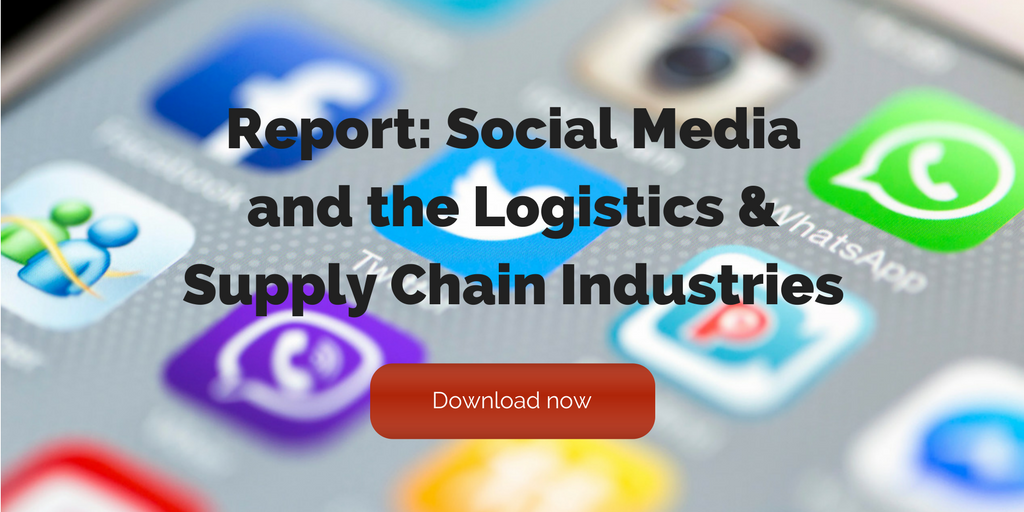
by Fronetics | Dec 6, 2017 | Blog, Current Events, Marketing, Social Media
The increasing popularity of chatbots is making it harder to ignore how artificial intelligence is helping shape the content marketing landscape.
Chatbots are the latest trend in artificial intelligence for marketers, and the supply chain and logistics industries should take note.
Chatbots can help automate and improve some of your marketing and customer service efforts. But to get the most out of these automated systems, you first must understand what they are and how they work.
What is a chatbot?
A chatbot is s a computer program that simulates human conversation using auditory or textual methods. Basically, it’s software that communicates with your customer inside a messaging app, like Facebook Messenger. Chatbots are similar to email marketing, but, instead of ending up in your inbox, they communicate through a messaging app.
Why are chatbots so popular?
As our mobile devices continue to change the way customers receive and interact with our brands, messaging-app usage has skyrocketed. In fact, 2017 saw a 69% increase in messaging-app users from last year. Business Insider reports the number of people on messaging apps surpassed the number of users on social networks. From iMessage to Facebook Messenger, mobile users are leaning more toward this newer technology to communicate with friends and family.
Why the big drop from email? Because people are buried in emails. On average, office employees receive 121 emails per day. Of those 121 emails, only around 20% are opened — and click-through rates are even lower. More and more companies have stuffed inboxes with repeated emails. Over-communication is the number one reason for readers’ unsubscribing to your email list. Chatbots have alleviated the inbox drama.
Why does my business need a chatbot?
Quality messaging without the spam
Chatbots take the spam out of email marketing. When companies market on a messaging app, they create an easier way for leads to receive educational messages about their brand. Chatbots are an easy and fun way for audiences to engage with your brand, getting answers to their questions and quality messaging about your products and services.
Ease of tracking and segmenting
Your brand will also appreciate the ease of tracking and segmenting your customers through chatbots. Take Facebook Messenger for example; using messenger bots, you can identify who your customers are in less than a minute. No other platform (email, social media) can get you that information as quickly or efficiently.
Increased customer engagement
Getting customers to subscribe to your chatbots is much easier than email subscriptions. Why? The ease of usage and lack of friction on messaging apps creates a more positive customer experience. Businesses can set up chatbots to message any user who comments on your social media pages. They can retarget people who have left your site, offering special discounts or promotions if they place an order. And chatbots can also nurture the sales process by notifying you of potential customers that request a specific action during their interaction with your chatbot.
How do I create a chatbot?
There are plenty of chatbot-building platforms available online. Before you pick a platform, make sure you do your research. Here are three of the top chatbot building platforms.
1. Chatfuel
This chatbot engine will do most of the hard work for you, ideal for those lacking programming experience. MTV, TechCrunch, BuzzFeed, British Airways and Adidas are said to have used Chatfuel to create their chatbots, along with almost 20,000 other users across the globe. The user interface is easy and slick, meaning you could create a chatbot in less than 15 minutes!
2. Chatscript
Launched back in 2011, ChatScript is a ‘next generation chatbot engine,’ which has won the Loebner Prize (awarded for the most human-like examples of artificial intelligence) four times. It provides an open source framework for developers to build and deploy chatbots.
3. Facebook ‘Bots for Messenger’
At its F8 developer conference in April, Facebook launched Bots for Messenger, a tool which allows developers and businesses to build chatbots for its Messenger platform (which is used by almost a billion people). Developers build bots, submit them for review, and then Facebook decides which get onto Messenger. The three main capabilities are its send/receive API, generic message templates, and the ability to customize the welcome screen users first see when interacting with your bot.
Messaging automation is the new email automation. Brands will be looking to join the chatbot craze for the ease, convenience, and the positive customer experience. Have you tried a chatbot program yet? We’d love to hear from you about your experience.
Related posts:


by Jennifer Hart Yim | May 30, 2017 | Blog, Logistics, Supply Chain, Talent
Is the Supply Chain talent gap problem really a talent management problem?
This guest post comes to us from Argentus Supply Chain Recruiting, a boutique recruitment firm specializing in Supply Chain Management and Procurement.
As a recruitment company completely specialized in Procurement and Supply Chain, we’re interested in following the so-called “talent deficit” in the field from all angles and perspectives. The fact is, it’s becoming harder for companies for find the talent that they need for these positions as baby boomers retire and the function evolves. As trade publication Supply Chain 24/7 puts it, “study after study has shown that for every new Supply Chain Manager entering the workforce, two (or more) are retiring.”
It’s a serious issue.
But the more you look at this issue, and the more perspectives you seek, the more you realize how complex it truly is: We’re witnessing a generational shift in the Supply Chain industry whereby more young people are entering the field. Technology has developed rapidly over the past 10 years, with big data, 3-D printing, Blockchain and automation promising to upset the apple cart completely over the next 10. It’s not just that people are retiring. It’s that finding people who have a depth of understanding of how to harness these new technologies is going to be a major driver of company competitiveness over the coming years, and they’re hard to find.
That growing demand is part of what makes Supply Chain such an attractive field for young people who are interested in business that combines global exposure, strategic problem solving, technology, and data. More universities and colleges are offering Supply Chain Management programs. But the skills required are always evolving, and how can the industry ensure that people are adequately skilled when they themselves can’t always predict the technological picture 3-5 years down the road?
Lack of talent management?
There was a thought-provoking blog post on this topic in Supply Chain Management Review this week by Supply Chain Professor Michael Gravier. Titled, “Lack of Supply Chain Talent – or Lack of Talent Management?”, the post talks about the talent deficit from the perspective of someone who’s very much in the trenches of preparing tomorrow’s Supply Chain leaders for tomorrow’s workforce.
Professor Gravier’s point is pretty simple, but pointed: “Young people who go into Supply Chain and manufacturing jobs complain that employers demand creativity during the hiring process, yet have no tolerance for new ideas in the workplace.”
In other words, companies are eager to lock down the highest-potential candidates — which only makes sense because of course you want the best talent, and of course you don’t want that talent going to your competitors. But once those candidates are placed? In Gravier’s eyes, organizations don’t necessarily take the next step and let them contribute in a creative way. For Gravier, millennial workers — especially high performers — specifically demand a higher level of engagement and skill growth than employers might be accustomed to. And, by putting these new workers in transactional roles without much opportunity for growth, companies are jeopardizing their long-term talent goals and putting themselves in danger of falling behind.
As Gravier puts it: “There’s evidence that companies show little commitment to developing and rewarding needed skills, and companies hire top-notch graduates in order to avoid having to deal with people problems later, which shows that there’s likely insufficient training and support as personnel move into supervisory positions.”
The reality for Supply Chain
A few things are worth mentioning from our perspective: for one, there’s always going to be a low person on the totem pole at any company. Workers have always had to “pay their dues” for the first couple years of their career, no matter the field, whether it’s doing dishes or preparing purchase orders. So it’s a bit unreasonable for recent Supply Chain grads to expect highly strategic roles right out the gate. For another, it makes sense for companies to want to hire the best people now, even if it means putting them in roles where they might not be developing as quickly as they would like?
On the other hand, if companies truly want to get ahead of their competitors, doesn’t it make sense to put resources into training, mentorship and skills development?
Whatever you make of his argument, it’s pretty easy to agree on one thing: Companies need to do all they can not only to attract great candidates, but to help them thrive and grow — both to keep those candidates’ eyes from wandering other opportunities, and to unlock the innovation that these candidates can provide.
But what do you think? Are companies developing junior prospects in Supply Chain well, or leaving them in entry-level positions for too long? Are you near the beginning of your career? Or does your company hire a lot of junior Supply Chain staff? Let us know in the comments!

by Fronetics | Apr 3, 2017 | Blog, Logistics, Strategy, Supply Chain, Talent
Hoping to draw more millennials to your talent pool? Implementing these three ideas might help win them over.
By the year 2020, millennials are estimated to make up a majority of the workforce. In addition, a 2014 study found that 46% of B2B buyers were millennials, and that number is on the rise. This seismic shift in workplace demographics calls for a new approach to attracting and retaining talent.
There are all kinds of stereotypes about this up-and-coming generation, many with a basis in truth, and just as many without. It’s crucial for your business to get to know this demographic group, both in terms of how they behave as consumers, and how they operate in the workplace. To that end, here are some ideas for attracting this talent pool to your company.
3 ideas for attracting millennial talent
1) Green technologies
Millennials are a generation saddled with all kinds of debt — from student loans to the ecological damage done by previous generations. Studies, not to mention voting behaviors, have shown that this generation is avidly interested in improving the planet’s future.
To win the hearts and minds of millennials, it’s time for your business to consider “going green.” Of course, green technologies can be prohibitively costly on a large scale — but many small changes can save you money in the long run. Not to mention, they will make your business a more attractive place to work for eco-minded millennials.
Consider making the switch from conventional to LED light bulbs, for example. If you have the resources, coupling smart thermostats in your facilities with higher-efficiency windows and doors is a great way to improve your carbon footprint, as well as your credentials among younger employees. Whatever your capabilities, making an effort to go green will go a long way toward making your business attractive to this generation.
2) Work-from-home options
Millennials are digital natives, accustomed to technology at their fingertips, with all the options that opens up to them. This often means the expectation of being able to work from a location of their choosing, whether it be home, a library, or a coffee shop. Millennials rank this kind of flexibility highly among factors that make companies appealing places to work.
Employers are increasingly answering the call, and even massive corporations like Wells Fargo and Aetna are finding ways to allow employees the option to work from home. These employers are finding that, often, what sounds great for employees also works to their advantage: A change of location can freshen thoughts, increase creativity, and lessen burnout that can slow down work for a team or entire company.
3) Opportunities to learn
Millennials are highly educated, and thirsty for knowledge — left unquenched, this thirst can lead them to job-hop frequently. At any given moment, 60% of millennial workers are open to pursuing a new employment opportunity. So how does your business combat this tendency and reduce turnover? One place to start is by offering continuing education to your workforce.
There are all kinds of ways to do this, and all kinds of benefits — including benefits to your bottom line. Making your employees more well-rounded means that they are more likely to be creative and flexible, able to respond to the needs of the constantly evolving supply chain industry.
Relating to millennials
Here’s the open secret: While each generation might have its quirks, millennials aren’t really all that different at the core than previous generations. They may express it in different ways, but they essentially want what workers have always wanted: interesting work, the opportunity to better themselves regularly, and to be treated with respect and dignity.
At the end of the day, you don’t need to be overly concerned about “relating” to millennials. According to one millennial writer, Sarah Landrum, “Millennials are in tune with current events, interested in getting involved with charity, and more interested in the world outside their heads than you might suspect.”
Related posts:

by Fronetics | Mar 15, 2017 | Blog, Content Marketing, Logistics, Marketing, Strategy, Supply Chain
A supply chain company published one more blog post per week and gained a new customer in one month.
Companies in the logistics and supply chain industries have been hesitant to adopt digital and content marketing because they are unsure about the benefits. We hear it all the time: Who is going to read a blog about my business? How is that going to get me more customers?
Something else we see all the time? How content marketing works for supply chain companies.
You see, the B2B buying process has changed. The vast majority of buyers now go online to research products and services they want to purchase. The proof is in the numbers:
- 94% of buyers reported using online research at some point in the purchasing process.
- 62% of B2B buyers say that a web search was one of the first three resources they use to learn about a solution.
- 95% of B2B buyers are willing to consider vendor-related content as trustworthy.
- 67% more leads were generated by companies with an active blog last year.
- 47% of B2B buyers consume 3-5 pieces of content prior to engaging with a salesperson.
- 51% of B2B buyers rely more on content to research and make B2B purchasing decisions than they did a year ago.
I could go on and on.
Blogging frequency matters
Here’s the rub: Blogging every once and awhile isn’t going to get you results. You need to publish quality content on a consistent basis to attract prospects to your site.
The reality is that the more often you blog, the more traffic and leads you’ll get. Search engines consider posting frequency in their rankings. What’s more, every time you post, you create a new opportunity to be found, to be shared, and to be linked to by other sites.
That being said, you don’t need to post five times a week to be successful. In fact, small steps can go a long way.
Try one more post per week
We often encourage our clients to increase their blogging cadence by just one more post per week. Though some are skeptical of the impact this will have on their traffic and lead-generation efforts, they inevitably find that such a small step can make a big difference.
Take one client of ours, for example.
We suggested moving from publishing one post to two posts per week. The client was unsure this would have any impact, especially for a company in the supply chain industry. But the immediate results spoke for themselves.
After just one month, the client saw the following successes:
- Web traffic increased by 23%.
- Social reach increased by 252%.
- Sales leads doubled. 90% of those leads were sourced from organic search.
- A lead converted to a customer.
All of these results were directly related to the increased blog frequency.
Test it out
The trouble in publishing more posts is balancing resources so that you’re publishing frequently but maintaining value and quality within your content. We’re big advocates of testing to find your personal sweet spot for the amount of posts your organization is able to publish to maximize traffic and leads.
Try publishing one more post per week for one month. Track your KPIs, calculate ROI, and assess whether increasing the blogging frequency is right for your business. You may be surprised at the results.
Related posts:

by Fronetics | Jan 17, 2017 | Blog, Content Marketing, Logistics, Marketing
Research and firsthand knowledge show a very strong correlation between posting frequency and traffic/leads.
Clients often ask us, “How often should I blog?” It’s a great question that has no simple answer.
The reality is that the more often you blog, the more traffic and leads you’ll get. Search engines consider posting frequency in their rankings. What’s more, every time you post, you create a new opportunity to be found, to be shared, and to be linked to by other sites.
The trouble, of course, is balancing resources so that you’re publishing frequently but maintaining value and quality within your content. So while there’s no universal magic number, there may be a sweet spot for the amount of posts your organization is able to publish to maximize traffic and leads.
Let’s look at some data that makes the case for frequent blog publication.
The more you publish, the more they’ll read.
There is a high correlation between publishing frequency and web traffic/leads. This is evident in a number of recent studies:
- HubSpot’s latest benchmarking data shows that blogs that published 16+ times per month received 3.5x more traffic than those that published weekly or less often.
- From the same report, companies that published 16+ blog posts per month got about 4.5X more leads than companies that published between 0-4 monthly posts.
- Curata’s recent survey of 400+ marketers found that 90.5% of the most successful business blogs (over 10,000 views per month) publish at least once a week.
If you’re a small business, you may be thinking, “Sure. Those successful blogs are all run by big brands with endless resources!” Not so, friends.
Two-thirds of the best-in-class blogs (with 10,000+ views per month) from the Curata study were run by small companies. The Hubspot report found that increasing posting frequency had the biggest impact on smaller businesses: Companies with 10 or fewer employees that published 11+ posts per month had almost 3X more traffic than companies publishing 0-1 monthly posts, and about 2X as much traffic as those publishing 2-5 monthly posts.
Will blogging one more time per week really make a difference?
We often encourage our clients to increase their blogging cadence by just one more post per week. Though some are skeptical of the impact this will have on their traffic and lead-generation efforts, they inevitably find that such a small step can make a big difference.
Take one client of ours for example. We suggested moving from publishing one post to two posts per week. The client was unsure this would have any impact, especially for a company in the supply chain industry. But the immediate results spoke for themselves. After just one month, traffic increased by 23%, sales leads doubled, and the client landed a new customer.
How often does your company blog? Have you ever experimented with posting frequency to determine how your resources are best spent?
Related posts:






